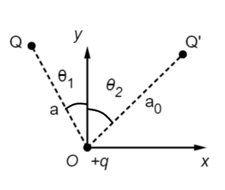B M Sharma Solutions for Chapter: Coulomb's Laws and Electric Field, Exercise 3: DPP
B M Sharma Physics Solutions for Exercise - B M Sharma Solutions for Chapter: Coulomb's Laws and Electric Field, Exercise 3: DPP
Attempt the free practice questions on Chapter 1: Coulomb's Laws and Electric Field, Exercise 3: DPP with hints and solutions to strengthen your understanding. Chapterwise/Topicwise Daily Practice Problems (DPP) Electrostatics and Current Electricity JEE Main & Advanced solutions are prepared by Experienced Embibe Experts.
Questions from B M Sharma Solutions for Chapter: Coulomb's Laws and Electric Field, Exercise 3: DPP with Hints & Solutions
Four charges equal to are placed at the four corners of a square and a charge is at its centre. If the system is in equilibrium, the value of is
Three charges and are placed as shown in the figure. The component of the force on is proportional to
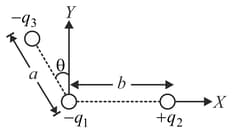
Two similar balloons filled with helium gas are tied to strings each of length A body of mass is tied to another end of the strings. The balloons float on air at distance If the amount of charge on the balloons is same then the magnitude of charge on each balloon will be
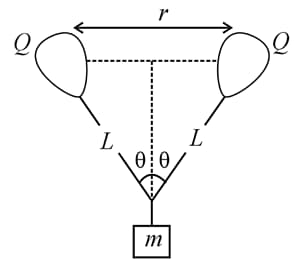
Two small spheres with mass and hang from massless insulating threads of length and The two spheres carry charges and , respectively. The spheres are hung such that they are on the same horizontal level and the threads are inclined to the vertical at angles and Which of the condition is required if
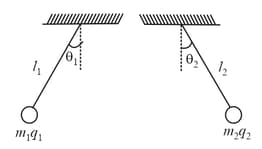
Two identical small balls each have a mass and charge When placed in a hemispherical bowl of radius with frictionless, nonconductive walls, the beads move, and at equilibrium the line joining the balls is horizontal and the distance between them is (see figure). Neglect any induced charge on the hemispherical bowl. Then the charge on each bead is
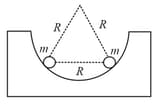
Three similar charges are placed on corners of an equilateral triangle of side How many minimum charges should be placed on a circle of radius with the center at , so that resultant force on the charge placed at the center is along the axis?
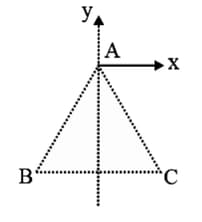
Four similar charges are placed at the origin and as shown. The angles are as shown. Charges at and are equidistant from at a distance of The forces of repulsion experienced by charge at due to charges at along are equal, given by Find the relation between and .
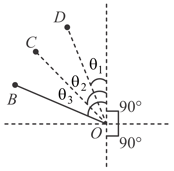
In the configuration, as shown, the charge is placed at the origin and charge and are placed at distances and respectively, from the origin. If the net electrostatic force on the charge is along negative axis and then is equal to
